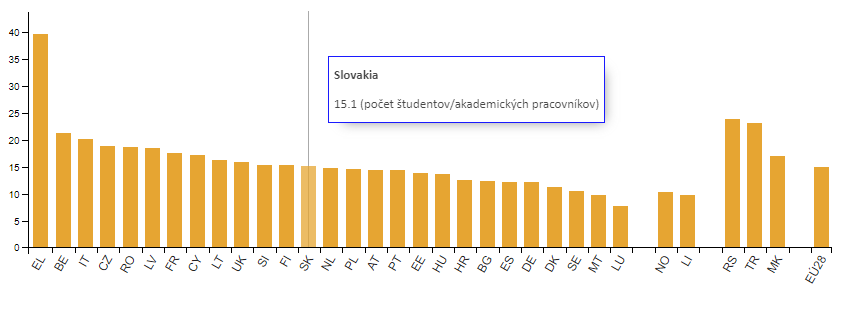Labour mobility is one of the underlying causes of structural unemployment, which can signal a high number of unfilled jobs at a time when there are a large number of unemployed workers. However, high unemployment rates can generally have a negative effect on labour mobility, as people become more worried and insecure about finding a new job or keeping their current job.
Demographic forecasts indicate that nearly 10 million workers are expected to drop out of the labour market in the next decade, starting in 2020. As many as 86% of employers now say they are struggling to fill vacancies. Employment rates depend to a large extent on the availability of a workforce that enables successful long-term labour market participation. Employers are thus increasingly expecting more from employees and prefer flexibility and a willingness to learn rather than narrow specialisation.
Firms adapt to the labour market situation
The shortage of skilled labour is beginning to pose a threat to the continued growth of businesses. One of the objectives of the National Employment Strategy of the Slovak Republic (Europe 2020) is that at least 40% of the working population aged 30-34 should attain tertiary education in the next year. In this area, the new EU Member States lag significantly behind the old Member States. Ten countries have reached the target, while only Estonia, Lithuania and Cyprus are newcomers. In Slovakia, 22.1% of the workforce had completed tertiary education in 2010, compared to 15.1% in 2016. By comparison, the Czech Republic had 20.4% in 2010 and 18.9% in 2016.

Increasing tertiary education often leads to jobs being filled with more skilled workers than required. The quality of tertiary education institutions is also an adverse phenomenon of the increasing number of tertiary education institutions. Institutions are increasingly producing graduates with general education who are not suitable to fill vacancies requiring vocational training. Responsibility for ensuring that employees receive the required education and skills is then transferred to employers.
“It is necessary to set up the education system in such a way that conditions for the supply of qualified employees are created continuously and in the long term. Unless the interest of the state is turned into real actions, the competitiveness potential of the Slovak Republic will be dangerously reduced.”
– President of the Association of the Automotive Industry
The assumption remains that, due to the shortage of employees, firms will adapt to the labour market situation. They will be more willing to accommodate specific requirements to get a good employee, and at the same time be willing to relax theirs. There is also a presumption that the selection procedure should be simpler. Thus, companies will be less strict in what they ask of a prospective employee. There will be fewer people to test and therefore there will be fewer selection rounds. This is not universally true, of course, but according to the survey, almost half of companies have already started to review their education or experience requirements for a given job, with the proviso that they offer training.
Labour mobility will also affect economic and political aspects
The shortage of skilled labour is expected to have an impact on economic growth and prosperity. Maintaining a highly skilled workforce is becoming a key strategic challenge with an eye on securing economic growth. In order to continue to maintain the standard of living in the European Union, we need to increase employment at all ages, labour productivity, and we will also need to think about increasing working hours. Raising the living standards of the population and the creation of sustainable jobs is also a prerequisite for the further development of the economy in the coming year, which should result in the removal of barriers to the growth of unemployment. It seeks to improve the participation of under-represented groups of workers in the labour market.
“Slovakia’s main competitive advantage on the global market is the very low cost of labour combined with the high availability of highly skilled employees. This makes Slovakia an interesting country for investors from Western Europe.”
– Marketing Manager at Manpower
Low mobility of the domestic workforce combined with a shortage of skilled workers is forcing firms to look abroad for people. The arrival of international students is one of the first ways to bring labour into the country under regulated mobility. That is why the number of foreign workers has been growing by tens of percent in recent years and the number of long-term unemployed locals has been increasing. A significant positive economic situation reduces the motivation of people to go abroad and vice versa.

Part of the extent of the deepening imbalance in the labour market is caused by demotivating social benefits, ethnic specificities of some regions of Slovakia or distorted value orientations of citizens. A significant factor in the labour market problems is the failure to create the economic conditions for a long-term increase in the number of new, productive and in excess of the jobs lost. By 2030, the National Employment Strategy aims to ensure healthy lives, improve quality for all regardless of age, promote economic growth and productive employment, and ensure sustainable consumption and production.
The digital economy is unavoidable in times of globalisation
The Organisation for Economic Co-operation and Development predicts that up to 30% of jobs could be automated in 2 decades. The digitalisation of the industry has already begun in the neighbouring Czech Republic. In this respect, it will be important to support science and research in rapidly emerging technologies such as artificial intelligence, super high-performance computing (HPC) or blockchain (dynamic encrypted database), for example. But many surveys show that there are two main fears among people today: the fear of job losses and the fear that artificial intelligence will “take us over”. Research also claims that in the next ten years artificial intelligence will significantly change up to 70% of jobs in Slovakia.
“According to the Organisation for Economic Co-operation and Development, up to 65% of today’s schoolchildren will work in jobs that do not yet exist or will change significantly. We are among the countries that will be most affected by the development of new technologies.”
– Microsoft CEO
The big assumption is that after 2020 the labour market will emphasise innovation and personalisation of products. From a model based on the loyalty and corporate affiliation of internal employees, it will move to external teams of specialists with the experience needed to get their projects off the ground. There will be an increasing emphasis on short-term projects rather than staying in long-term employment with one employer. People will be driven by the desire to do a good and quality job and will be able to achieve a common goal through self-organisation. We are also at risk of moving from the traditional top-down model of governance to the opposite bottom-up model. Managers will thus not be a permanent part of projects as they are today, but will only be present during certain phases of projects. Leaders’ success will be judged against their ability to build relationships, communicate and solve problems effectively within teams. Competitiveness will be the key to success in the future.

Recruitment agencies specialising in certain industries or professions also play an important role in the labour market. Jobseekers (including from other countries) have the opportunity to sign a job placement agreement with them. Labour mobility will also be promoted on their behalf to tackle youth unemployment and help employers find the skills they are looking for but cannot find on the local labour market.







